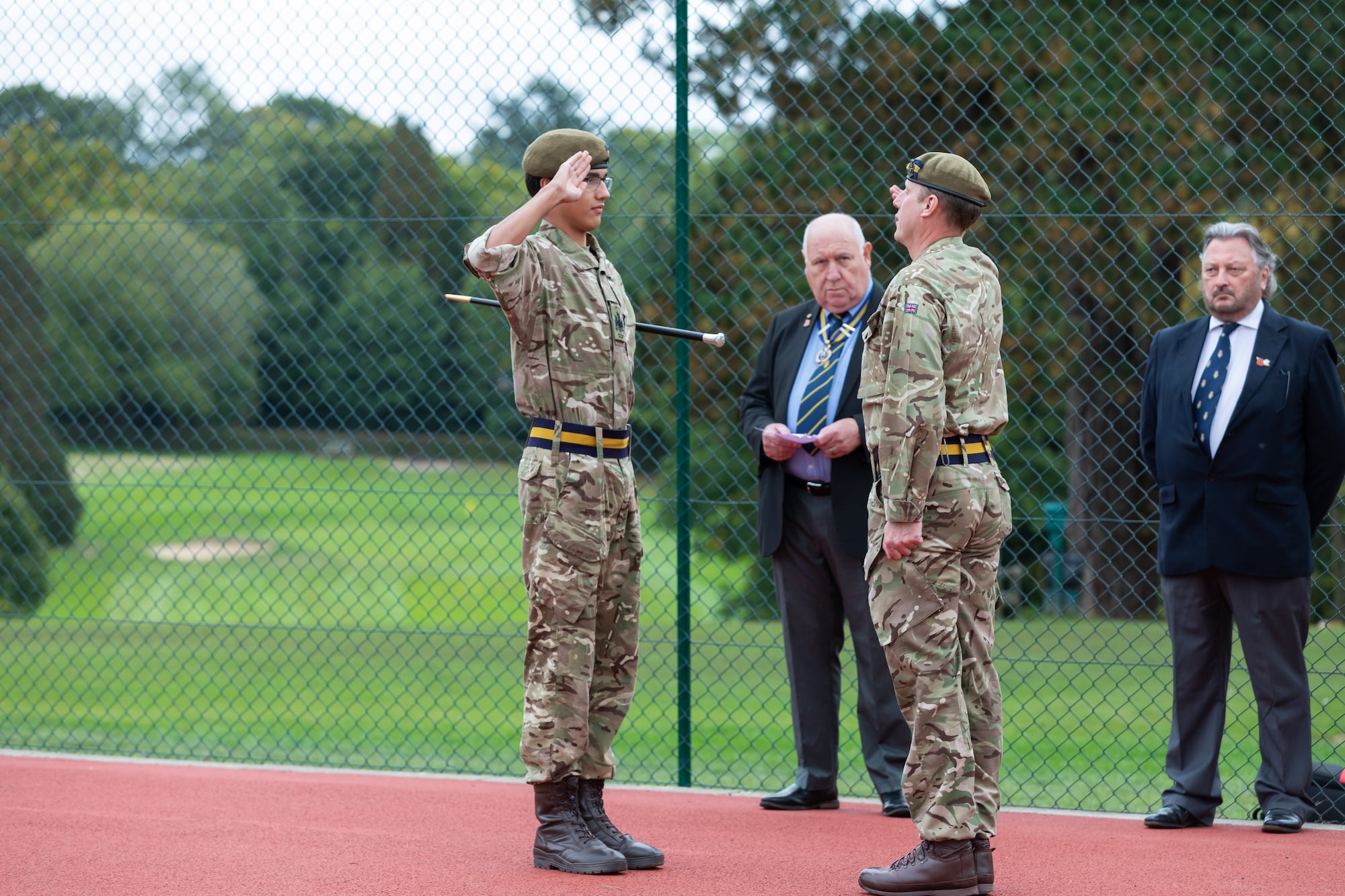 Another play of Ionesco, ‘La Cantatrice Chauve’, can still be seen in its original production in Paris today at La Huchette Theatre where it has run continuously since 1959 with ‘La Leçon’. Perhaps the higher value the continent places on culture can be seen if we contrast the fact that London has an Agatha Christie play, ‘The Mousetrap’, which has now run for over half a century. However, at Cranleigh School we have a fine tradition of truly serious theatre and, in a term where Beckett plays also challenged and stimulated school audiences, it was a wonderful experience for me to see my first ever ‘Rhinoceros’ in such a fine production, directed by Nikki Lockwood.
Another play of Ionesco, ‘La Cantatrice Chauve’, can still be seen in its original production in Paris today at La Huchette Theatre where it has run continuously since 1959 with ‘La Leçon’. Perhaps the higher value the continent places on culture can be seen if we contrast the fact that London has an Agatha Christie play, ‘The Mousetrap’, which has now run for over half a century. However, at Cranleigh School we have a fine tradition of truly serious theatre and, in a term where Beckett plays also challenged and stimulated school audiences, it was a wonderful experience for me to see my first ever ‘Rhinoceros’ in such a fine production, directed by Nikki Lockwood.
The pill was slightly sugared for the mixed-age audience with added humour, such as the camp firemen (nudges and winks from Harry Adorian, also a funny Old Man, and Monty Clarke), though the inventive idea of the visual demonstration of the number of horns on a rhino was, I felt, absolutely inspired. Another feature that added greatly to the Absurdist power of the drama was the set with its central grilled doors. This allowed the chillingly disturbing rhinoceroses (from Wimbledon College of Art) to be caged and then released towards the audience, and then they suggested the imprisonment of Berenger’s humanity. The upper room was also used very imaginatively and the whole set, together with the dramatic lighting and the frightening sound effects, made a Gesamtkunstwerk which indicated how vital a part of the production team Mark Jenkins has become: few people combine such literary sensibility with his technical know-how. The multiplying rhino-heads were lit to maximum dramatic effect; as always the technical team and stage crew deserve our grateful thanks.
The cast seemed a true ensemble, consisting as it did of some very experienced young actors, even in the more minor roles. Cecile Zoet was well-cast as the formidable Daisy and held the stage with great maturity. I hope she, Weston, Olivia and the others will forgive me, though, for concentrating here on four key male characters. Alex Livingstone impressed me hugely as Jean, especially in the key scene with Berenger in which Jean turns, croaky and greening, into a rhinoceros. The back of the programme contained beautifully chosen words by Ionesco which warns us against overly specific and political readings of the text and Alex ensured that the absurd surface was entirely credible and thus powerfully symbolic. Kafka’s ‘Metamorphosis’ is clearly an influence, though, in a sense Ionesco reverses this fable by creating many monsters to one human being.
Orlando Taylor took two parts and his confident gestural acting as the odious M. Botard was a highlight of the first half. After the interval, director Nikki Lockwood superbly turned the tone to dead serious. George Collecott, who also played two parts, was outstanding as Dudard, ensuring dramatic tension and emotional involvement was screwed to the sticking-place, despite the play’s anti-naturalism. As Berenger, Ben Castle-Gibb gave a performance that will haunt my memory for years. His increased isolation reminded me of Britten’s Peter Grimes and his stage presence was quite remarkable. Contrasted to the immaculate Jean, Berenger appears as charismatically seedy, with a haunted look that made me imagine a parallel of Robert Pattinson (of ‘Twilight’) playing Hamlet. I was reminded also of Ken Stott as TV’s Rebus: the drink problem in a sense symbolizing post-lapsarian human frailty. Ben is one of those compelling actors who make it hard to watch anyone else on the stage: his whole body expressed the suffering and bewilderment of being an island of non-conformity in a sea of troubles. Another image which came to me (from nearly 40 years ago) was Hitchcock’s ‘The Birds’, made only four years after Ionesco’s play, such was the terror that Ben conveyed. I remembered also a BBC documentary from 25 years ago in which a lawyer described his client actually in the gas chamber, during his execution, gasping for the breath to shout as many times possible “I’m human!”, before the land of the free carried out the will of the people. Such, I believe, is the nature and power of Ionesco’s art: the audience must experience Berenger’s suffering in their own way. As T S Eliot wrote:
“I have heard the key
Turn in the door once and turn once only
We think of the key, each in his prison
Thinking of the key, each confirms a prison
Only at nightfall, aethereal rumours
Revive for a moment a broken Coriolanus”
Now, if we had not had a production of ‘Hamlet’ at Cranleigh so recently…
PJL
Back to all news











